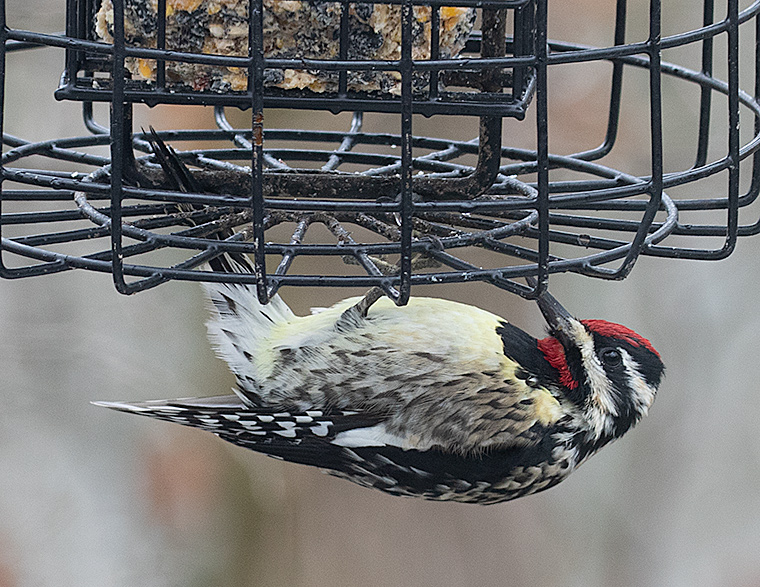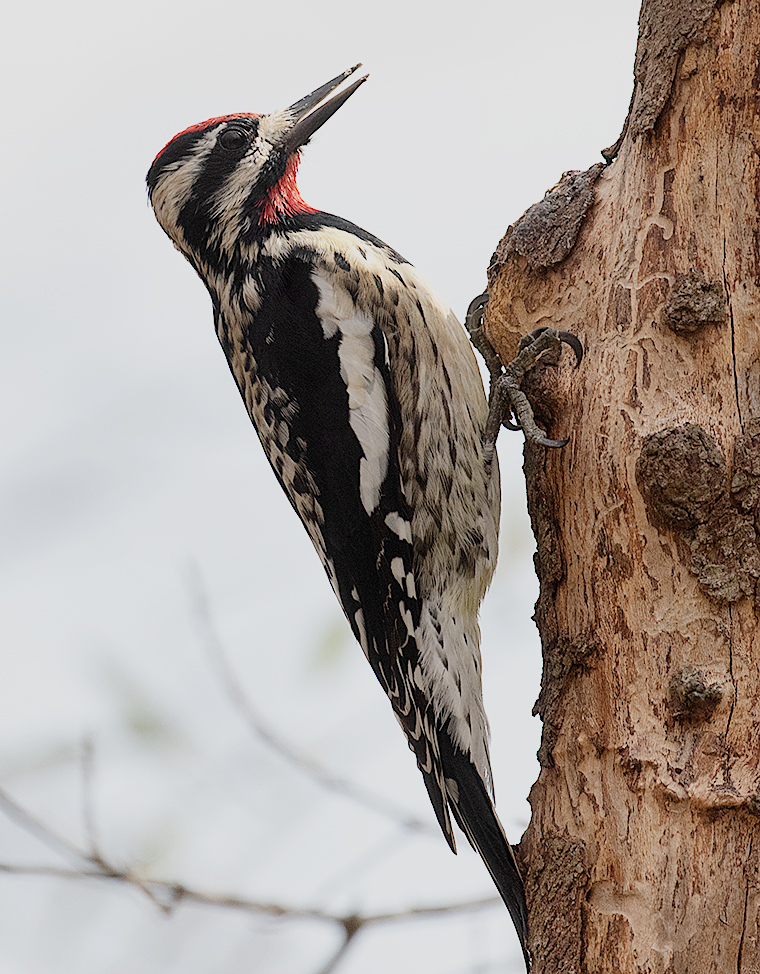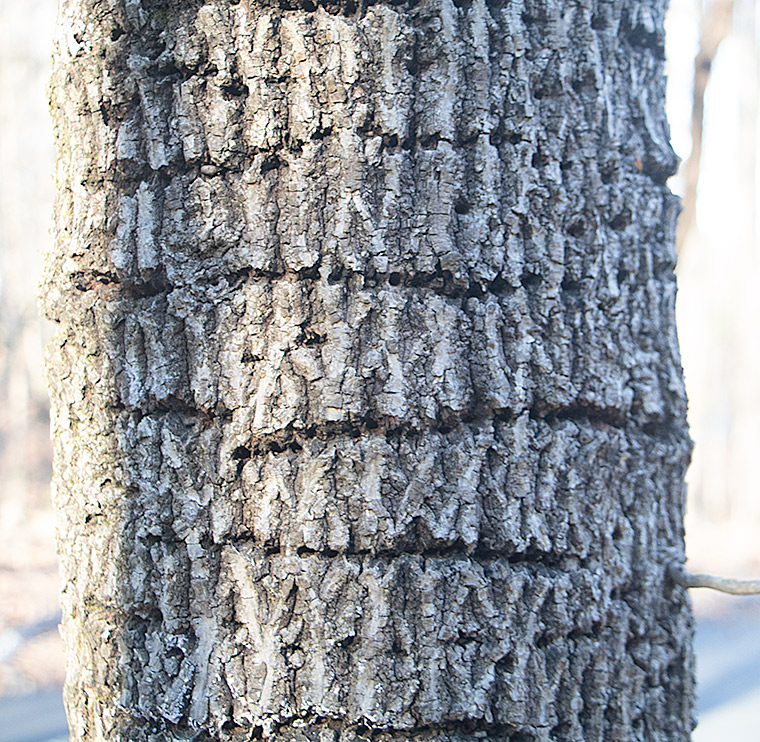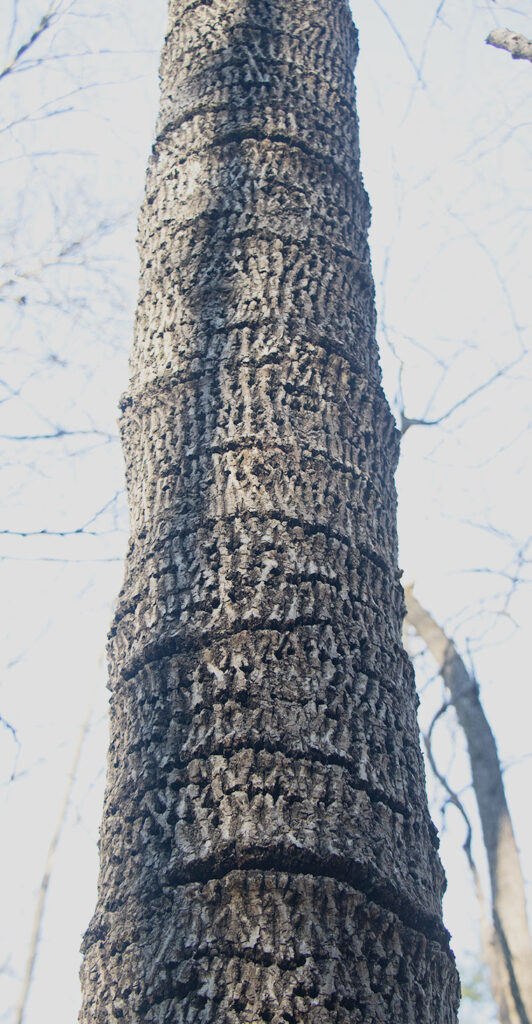
This photograph shows an interesting woodpecker that showed up at our house recently. It is a Yellow-bellied Sapsucker (Sphyrapicus varius}. This one is a male; females would have a white throat. It is trying to get some suet from out feeder. We have to keep the suet in this cage because if not, the squirrels eat it all up. The holes in the mesh are small enough for many birds to enter and get at the suet. For example Downy Woodpeckers (Dryobates pubescens, Hairy Woodpeckers(Leuconotopicus villosus) Carolina wrens (Thryothorus ludovicianus), Goldfinches ((Spinus tristis), Pine Warblers ((Setophaga pinus), Carolina Chickadees (Poecile carolinensis), and Tufted Titmouses (Baeolophus bicolor) can all get at the suet. This Yellow-bellied Sapsucker, however is just a little too big to get through the mesh and get at the suet.

Here is a side view of the Sapsucker in a more natural pose on a dead tree.
This tree is an example of the Yellow-bellied Sapsucker’s work. These birds will select a certain tree, return to it time after time, and drill through the bark to the underlining phloem layer. They drill holes side by side around the entire circumference of the tree. These rings of holes are repeated every few inches. The Sapsucker will then return to the tree, sip up any sap that oozes from the holes, perhaps eat at bit of cambium, and eat any insects that are attracted to the sap. Sapsuckers have a specialized tongue with a brushy tip to enable them to collect the sap. Such trees are maintained for many years. This tree in our woods, for example, has been visited for more than 20 years.
Other birds will also visit Sapsucker trees, Ruby-throated Hummingbirds get a large part of their diet from these trees in certain circumstances.

This is a close-up to show the rows of holes in the tree.
All-in all, a very interesting little bird.


Very interesting. No doubt the squirrels are bedeviled by the second outer cage – but that is a good thing for our feathered friends.